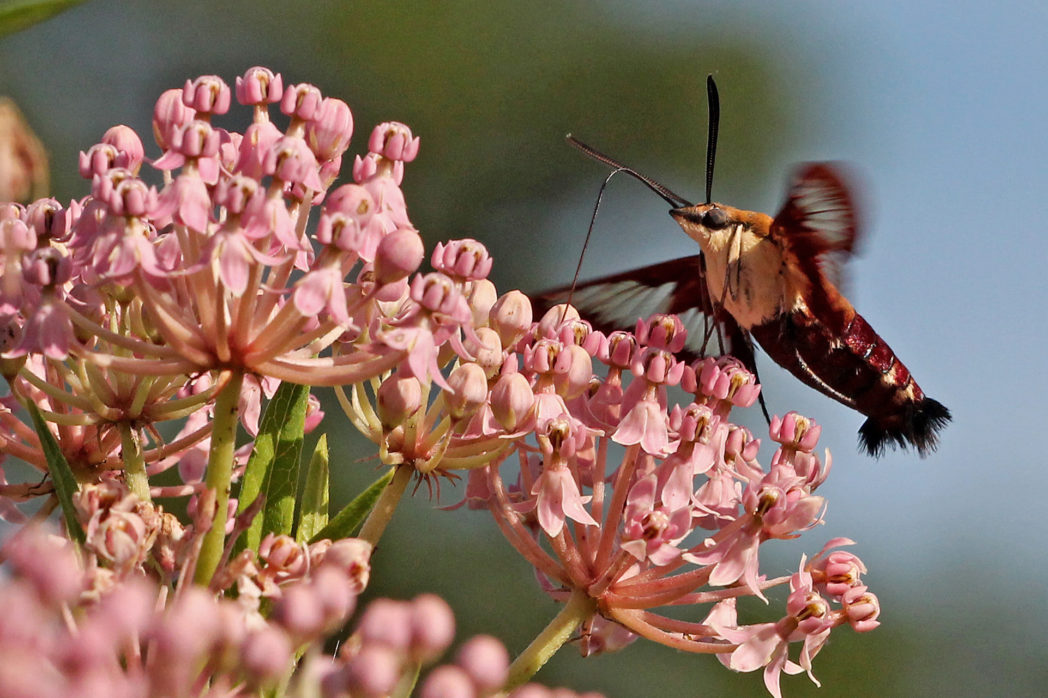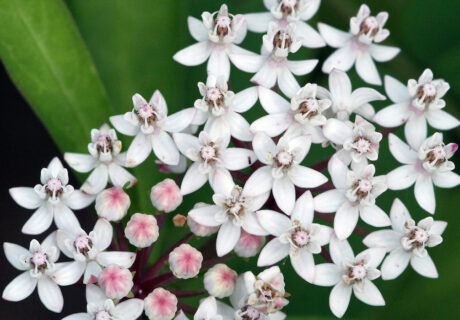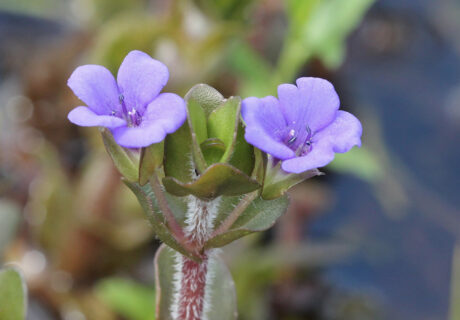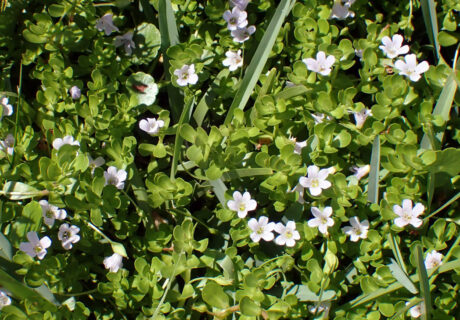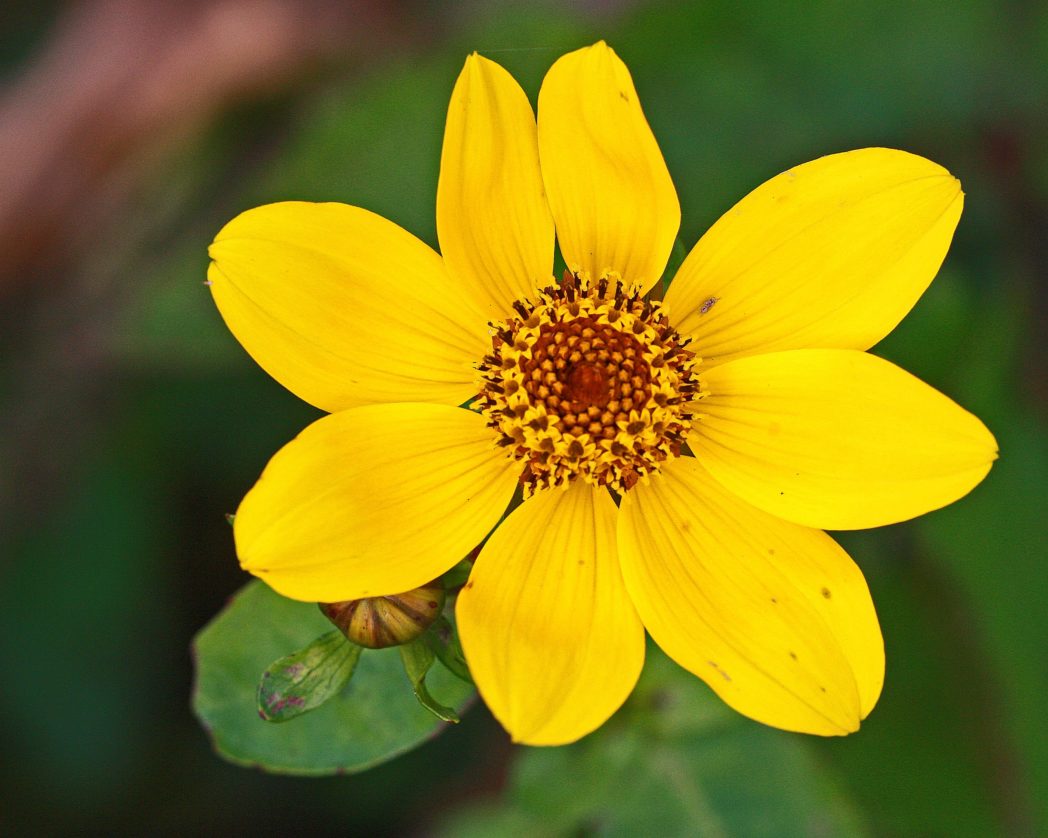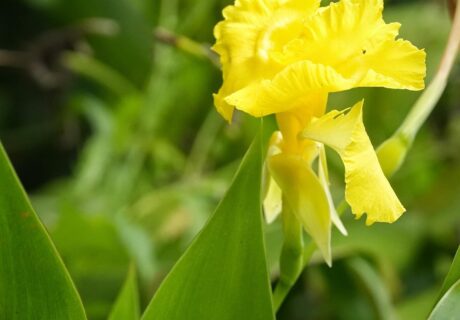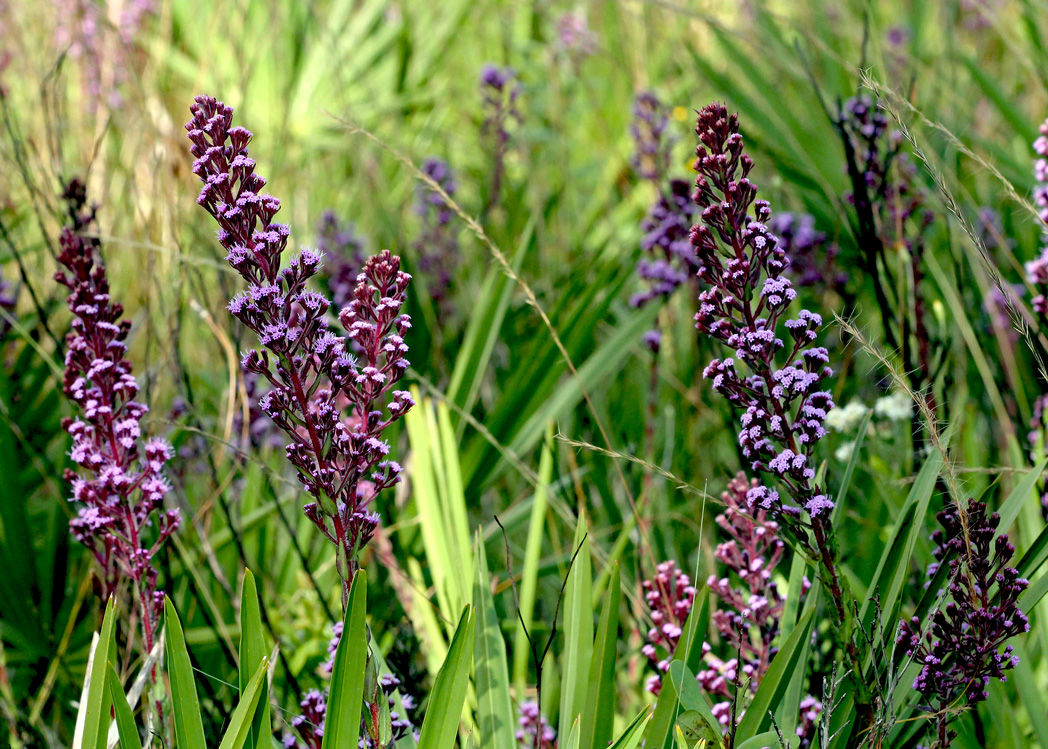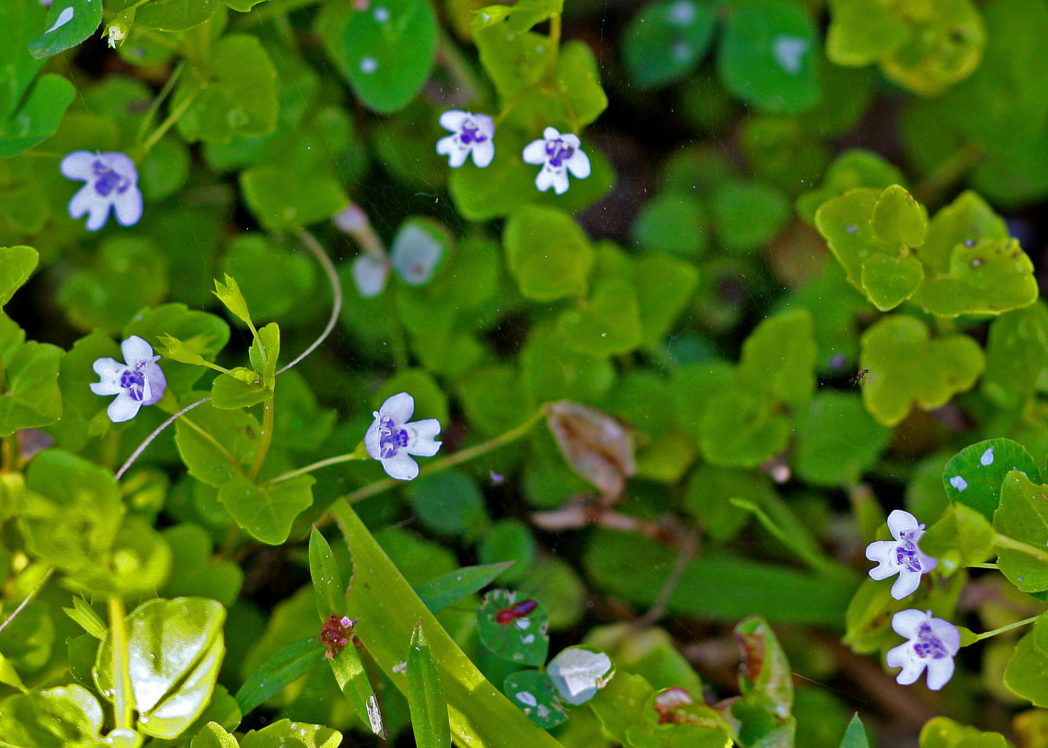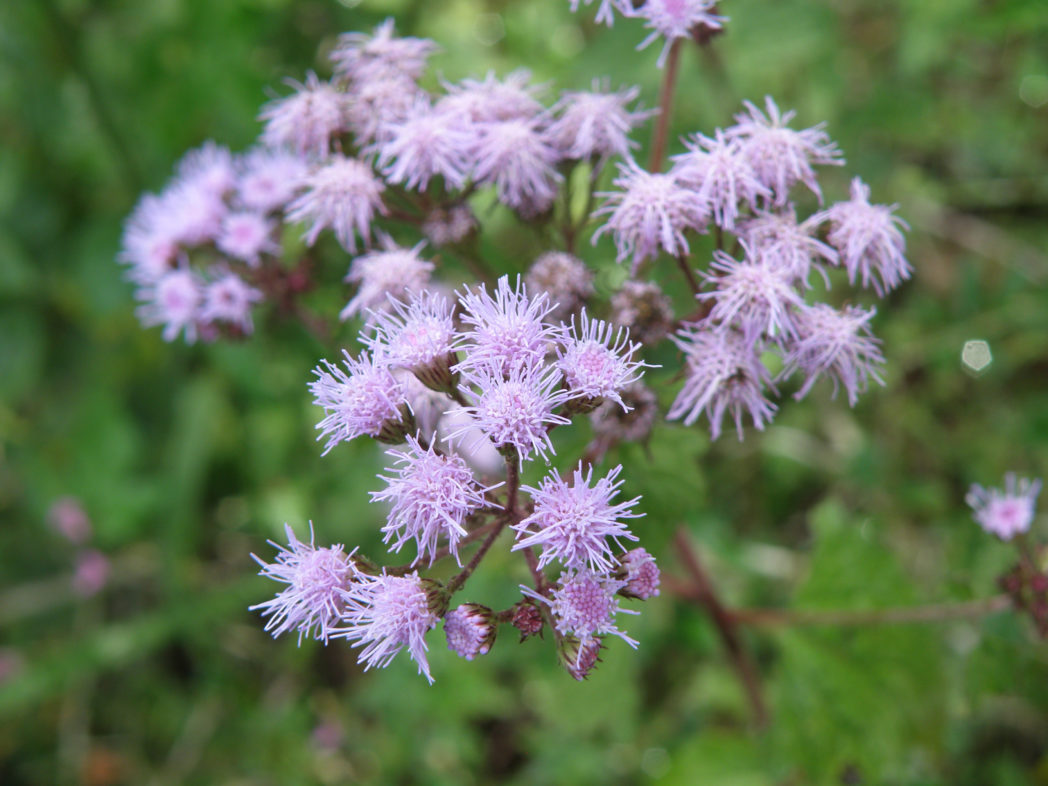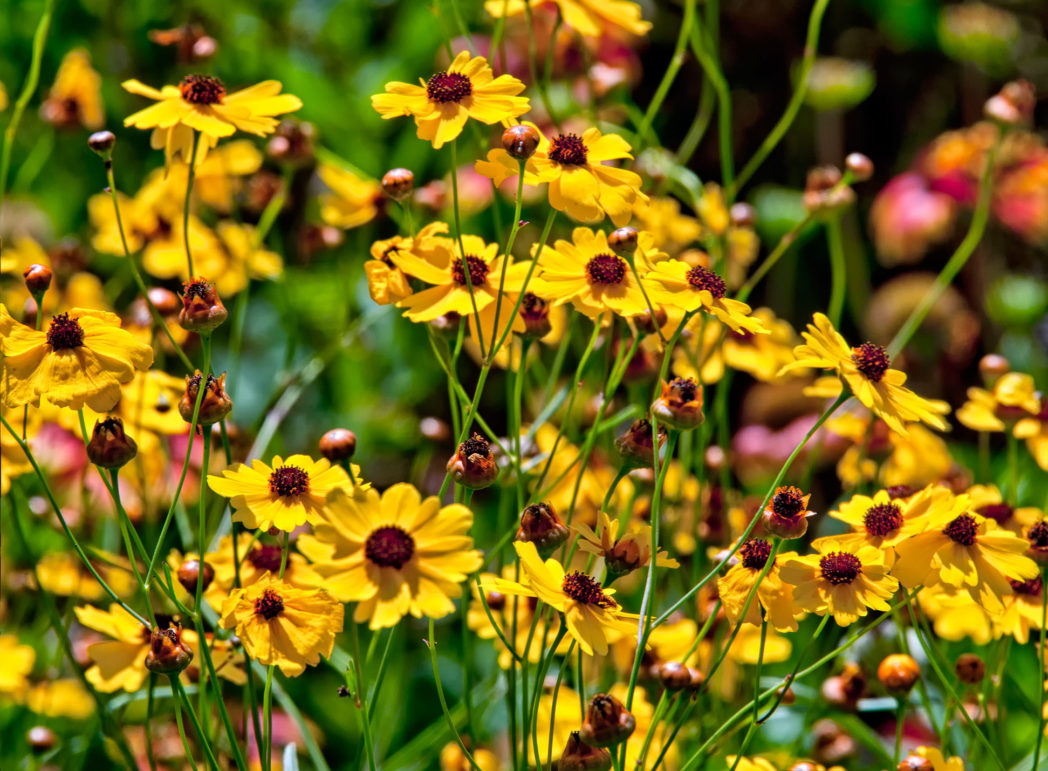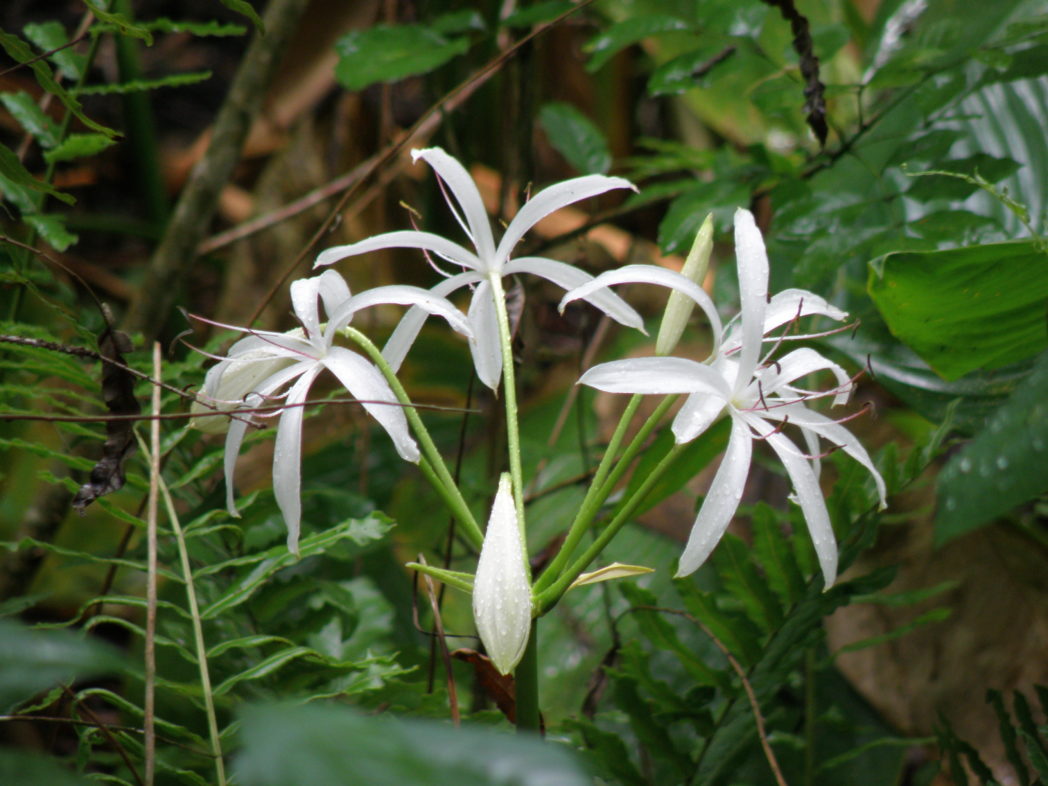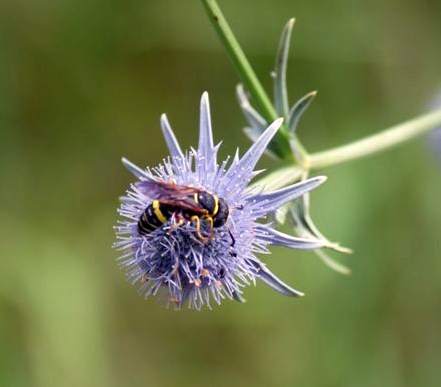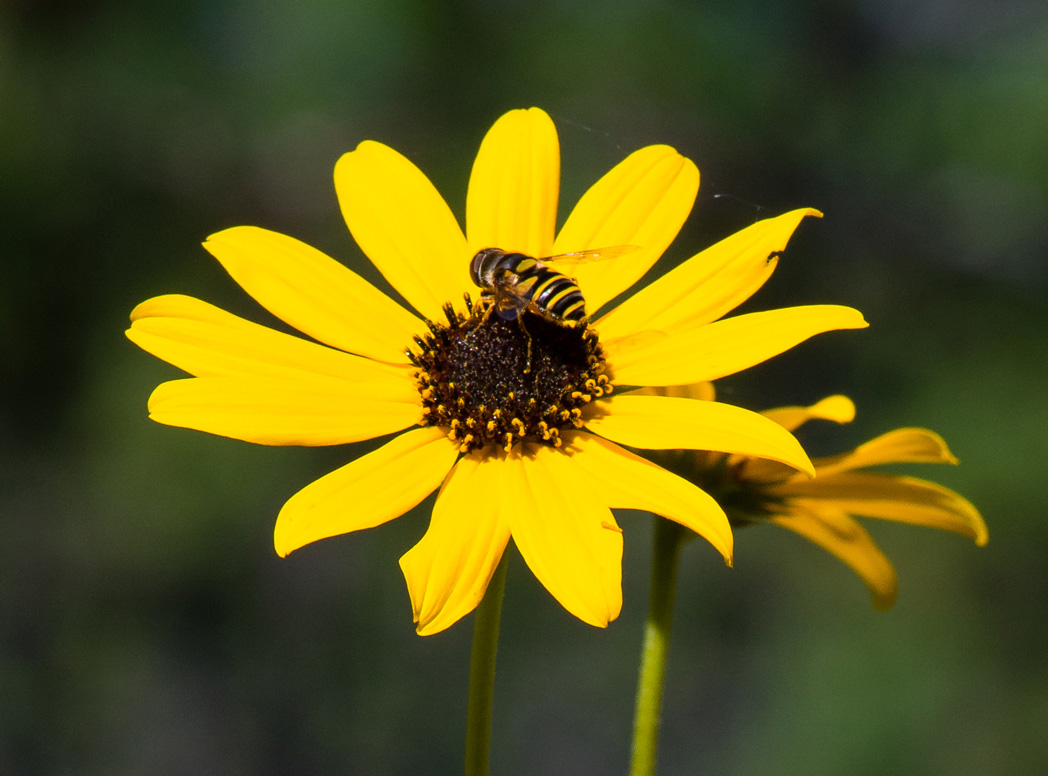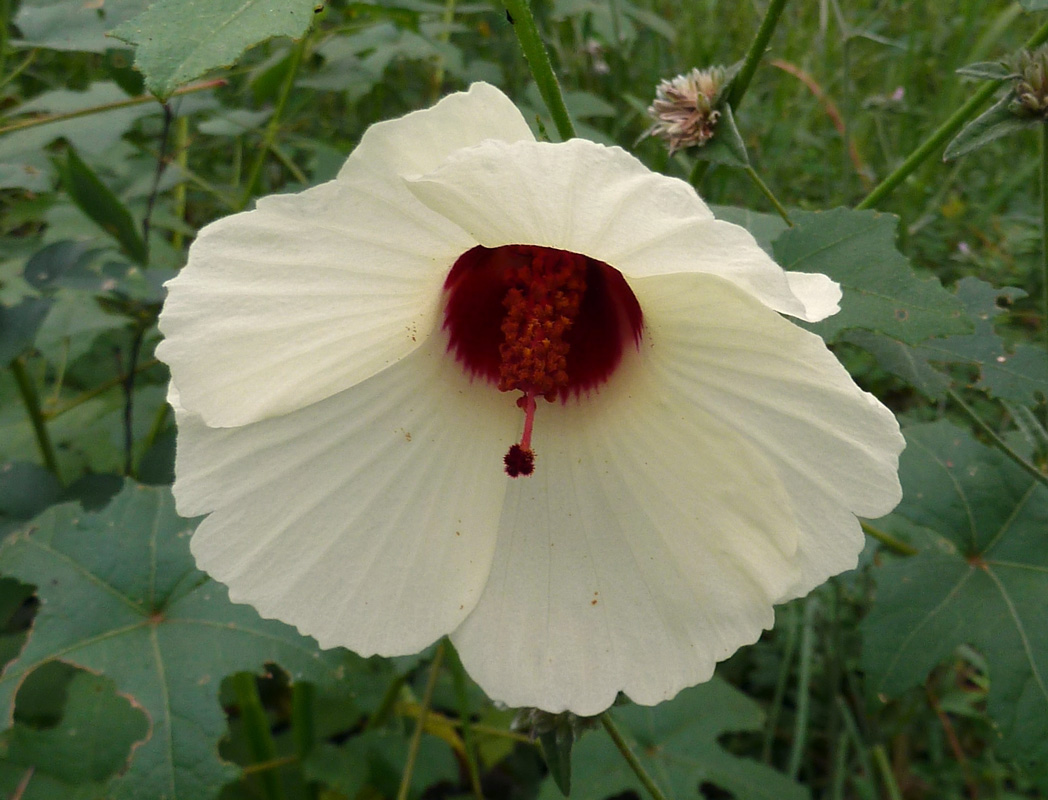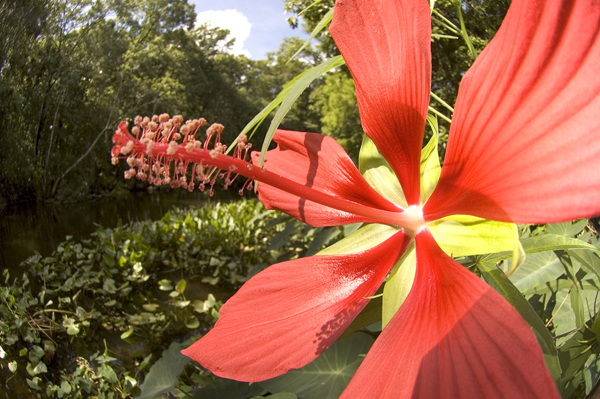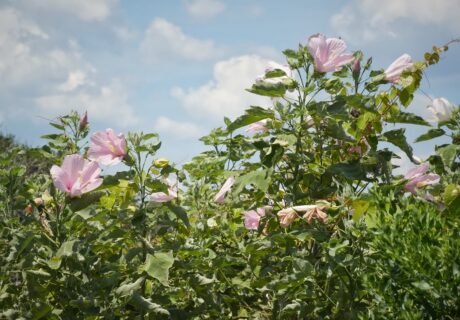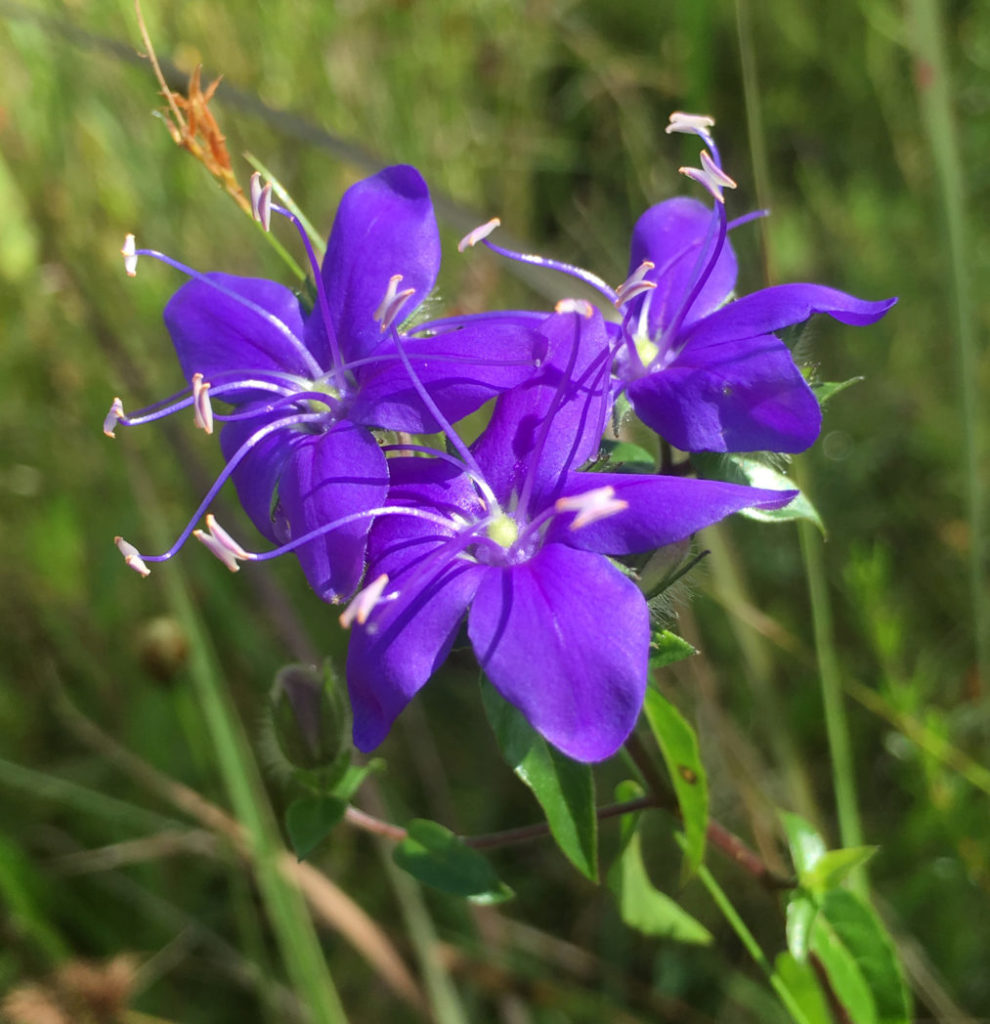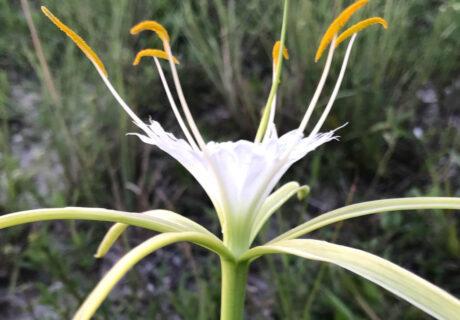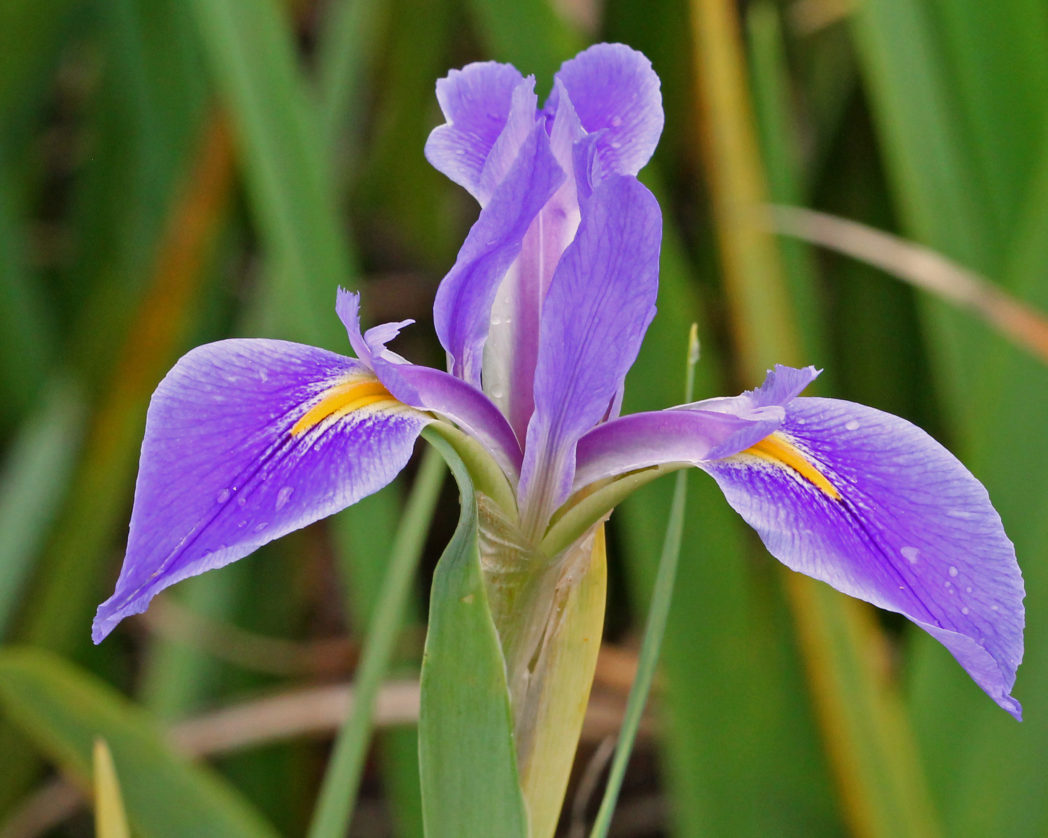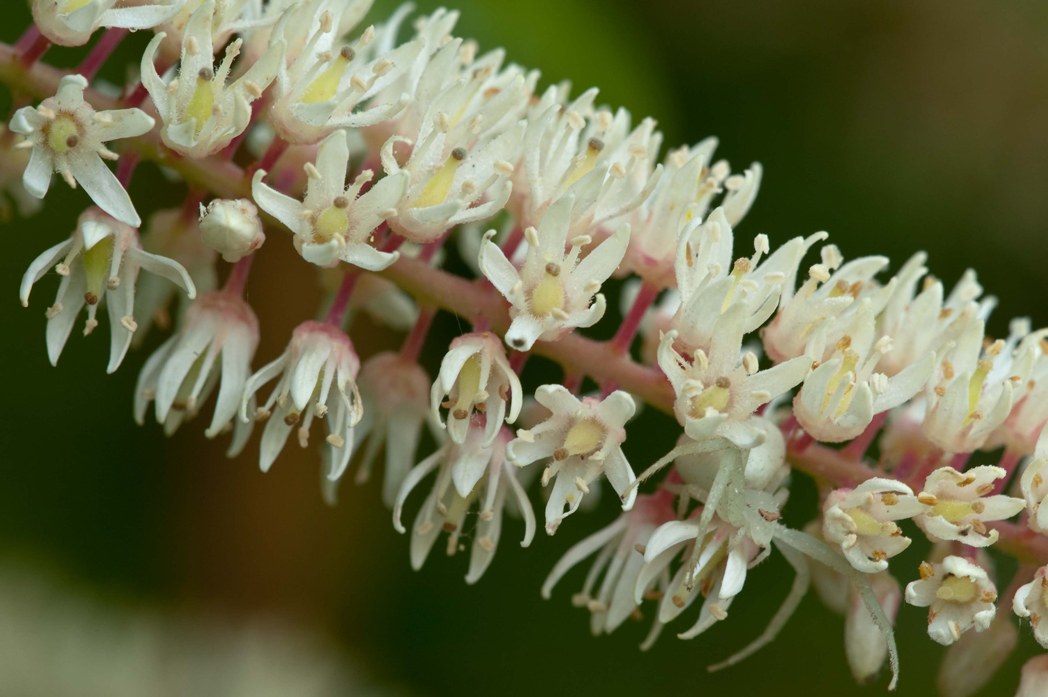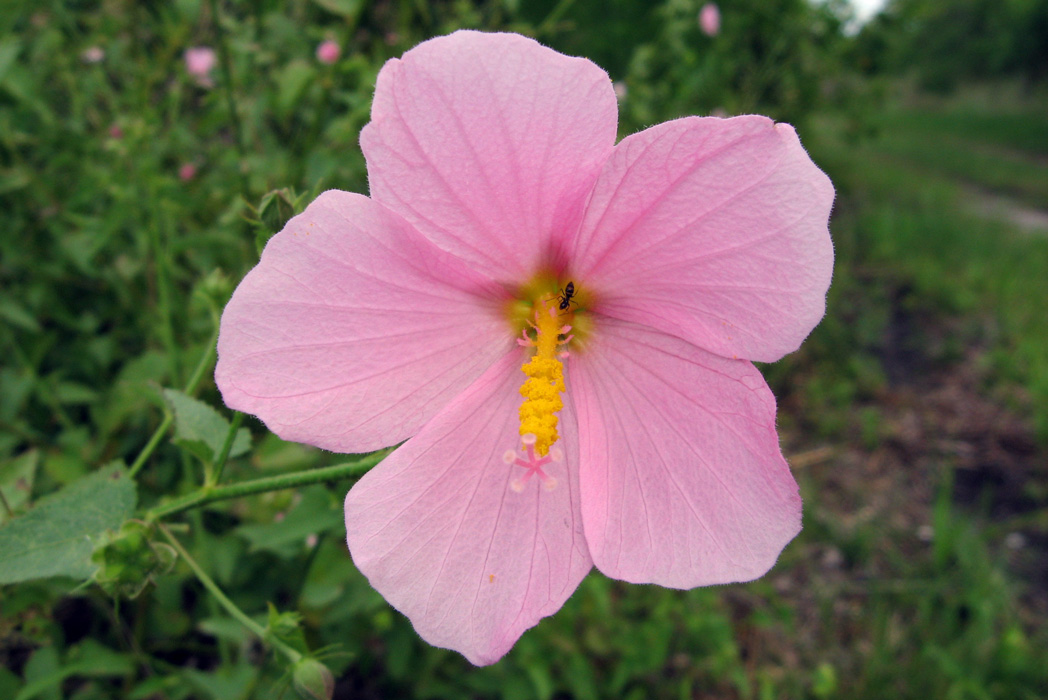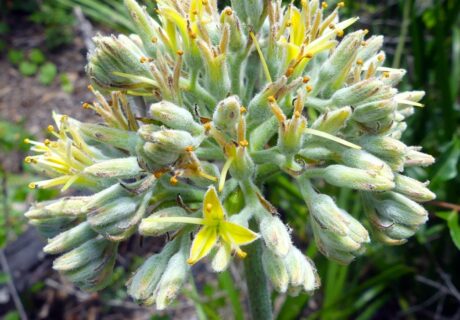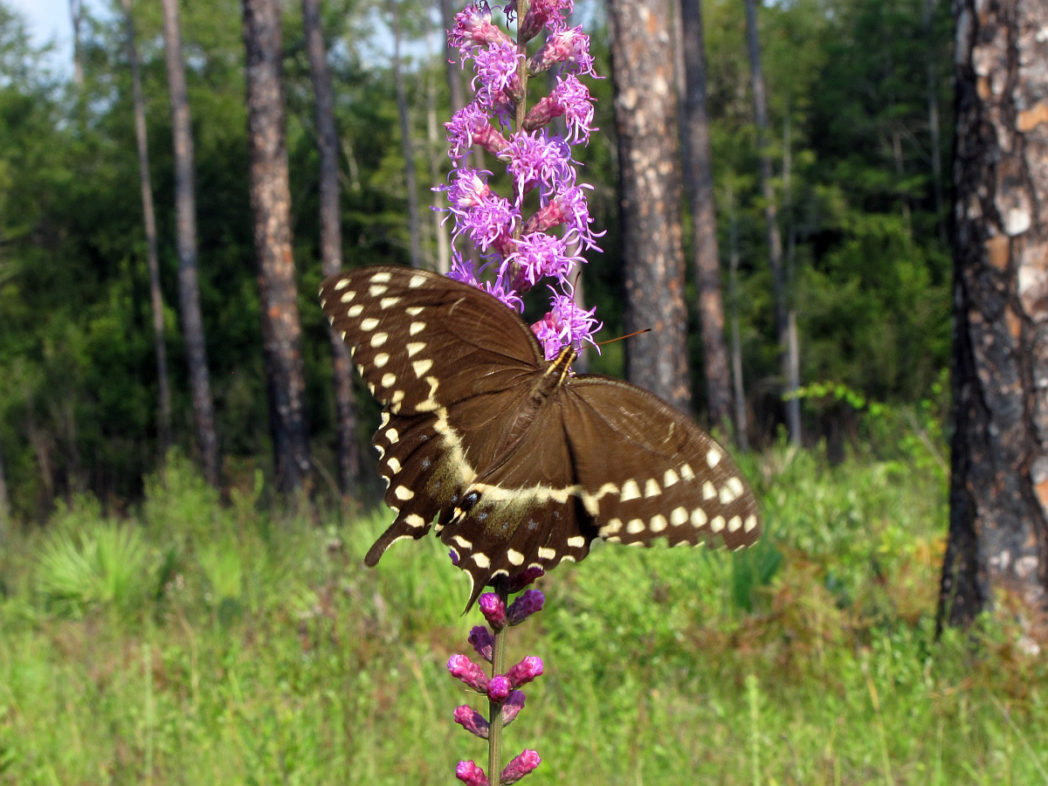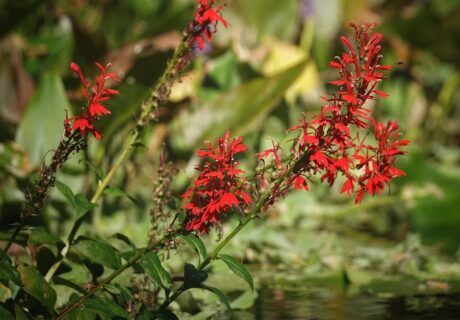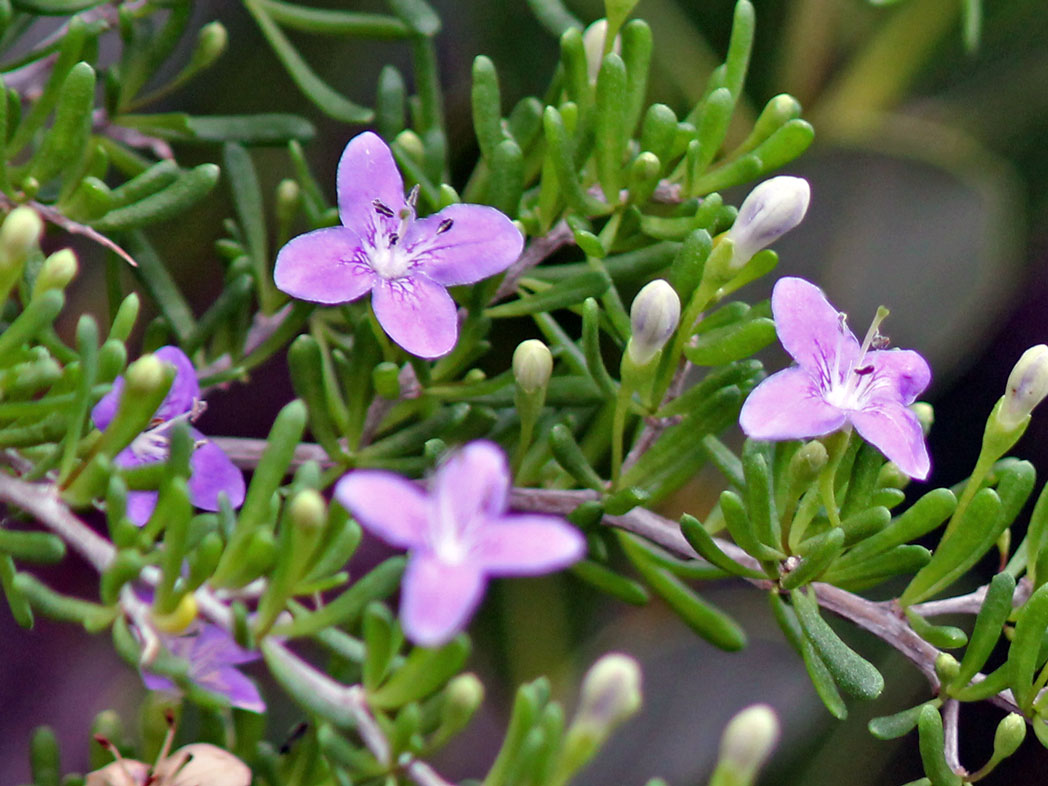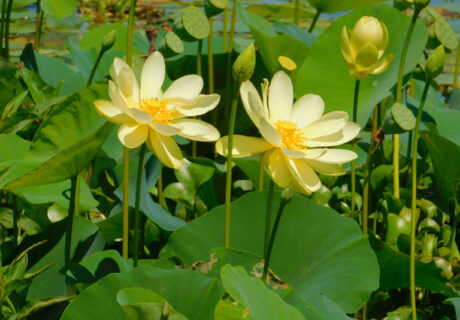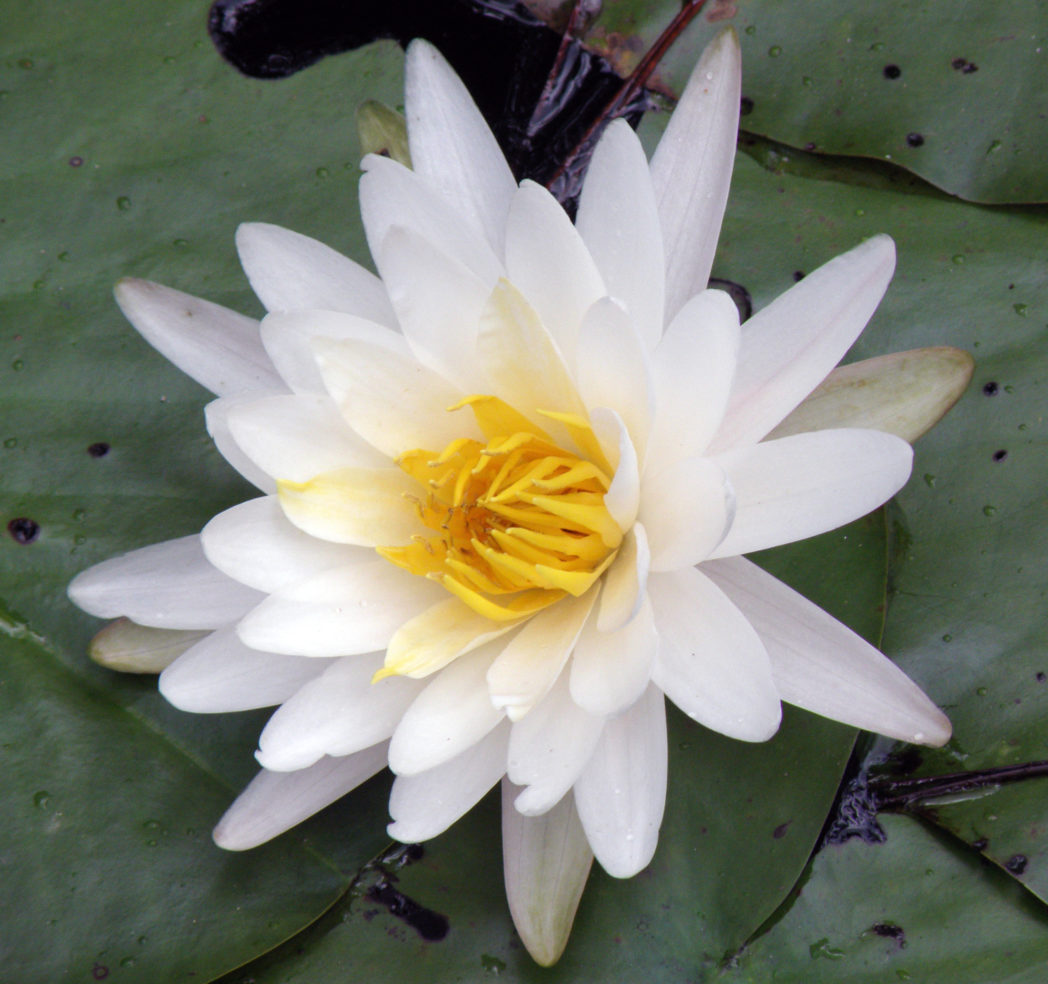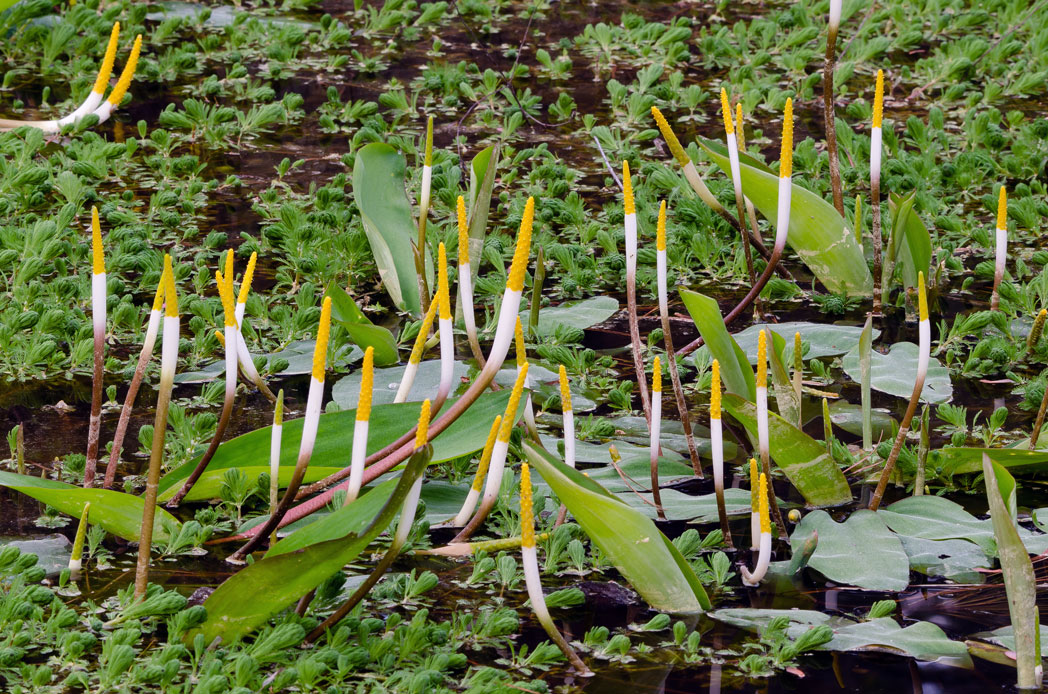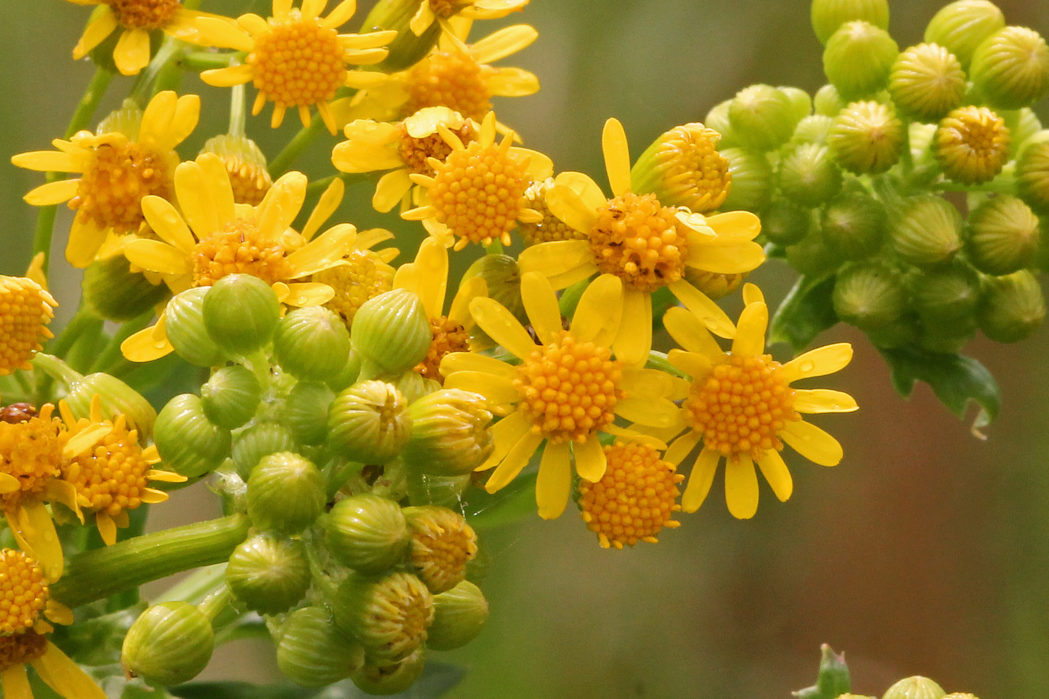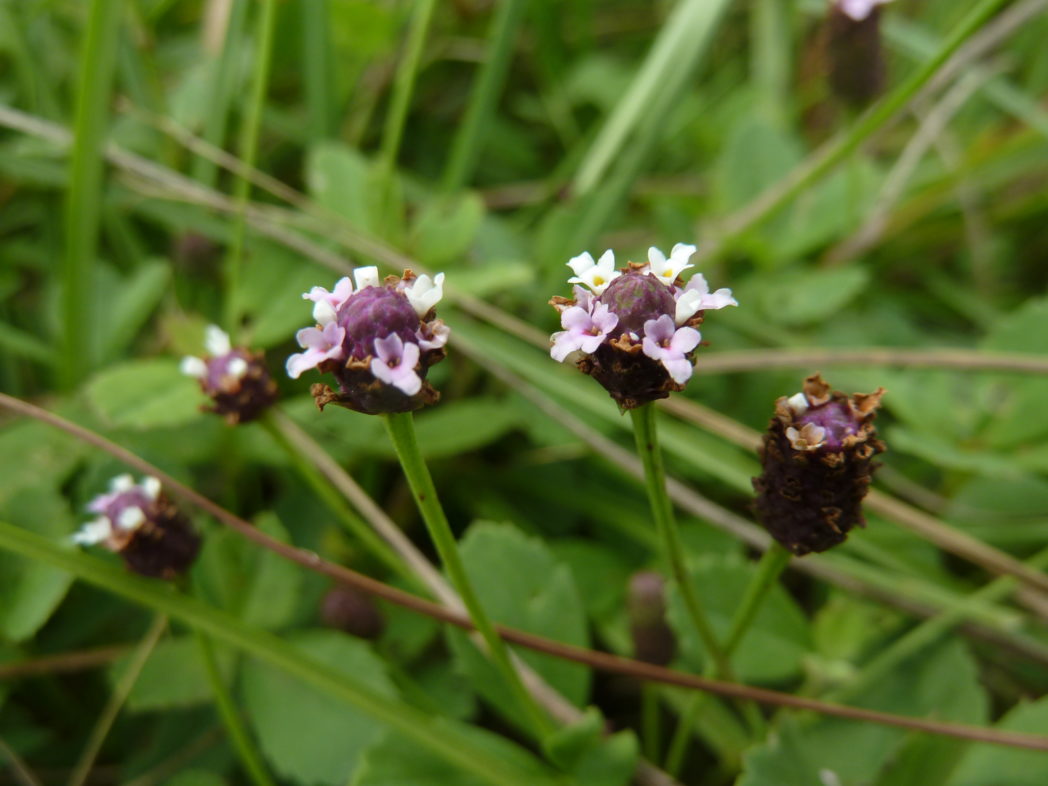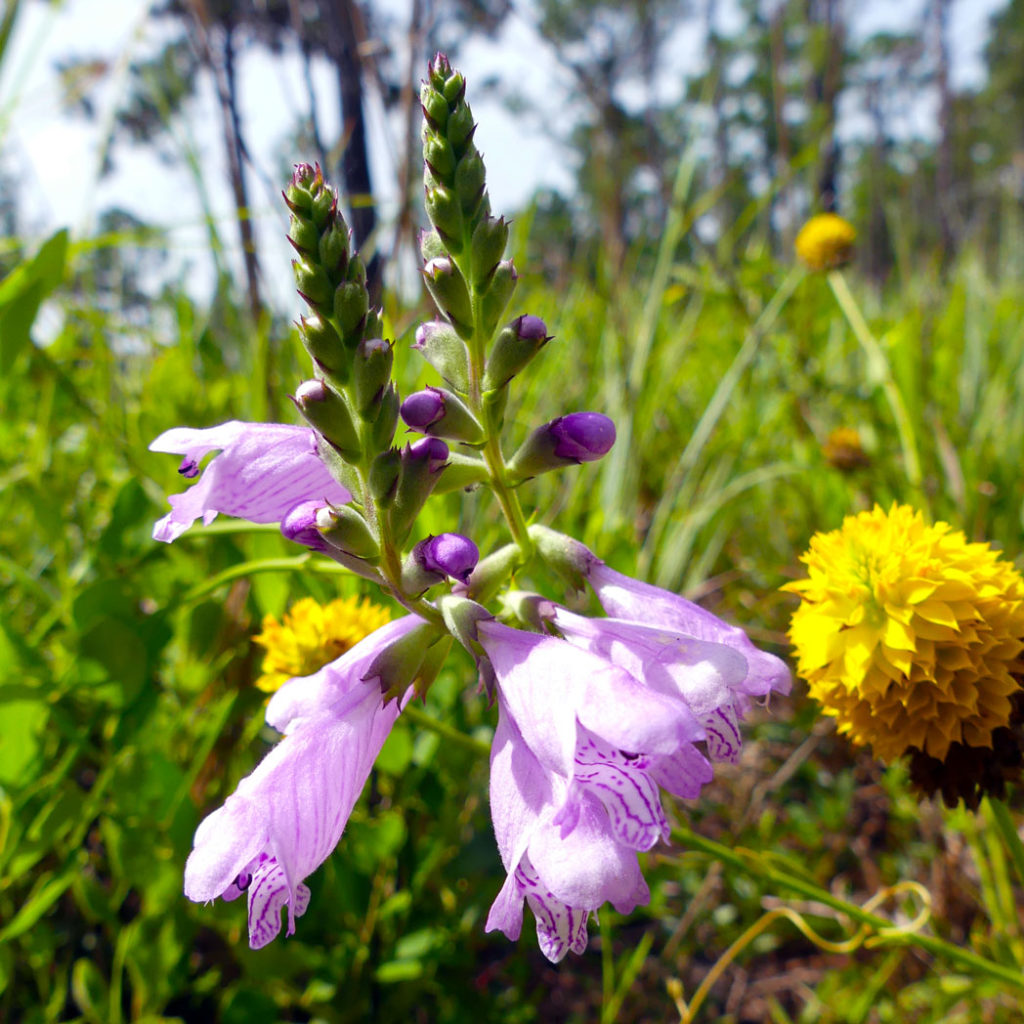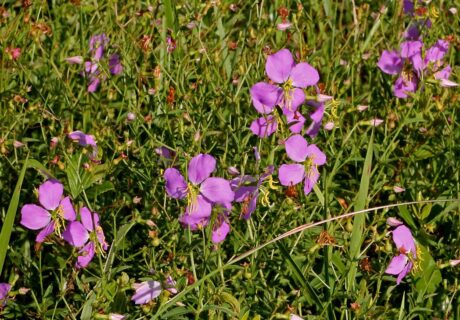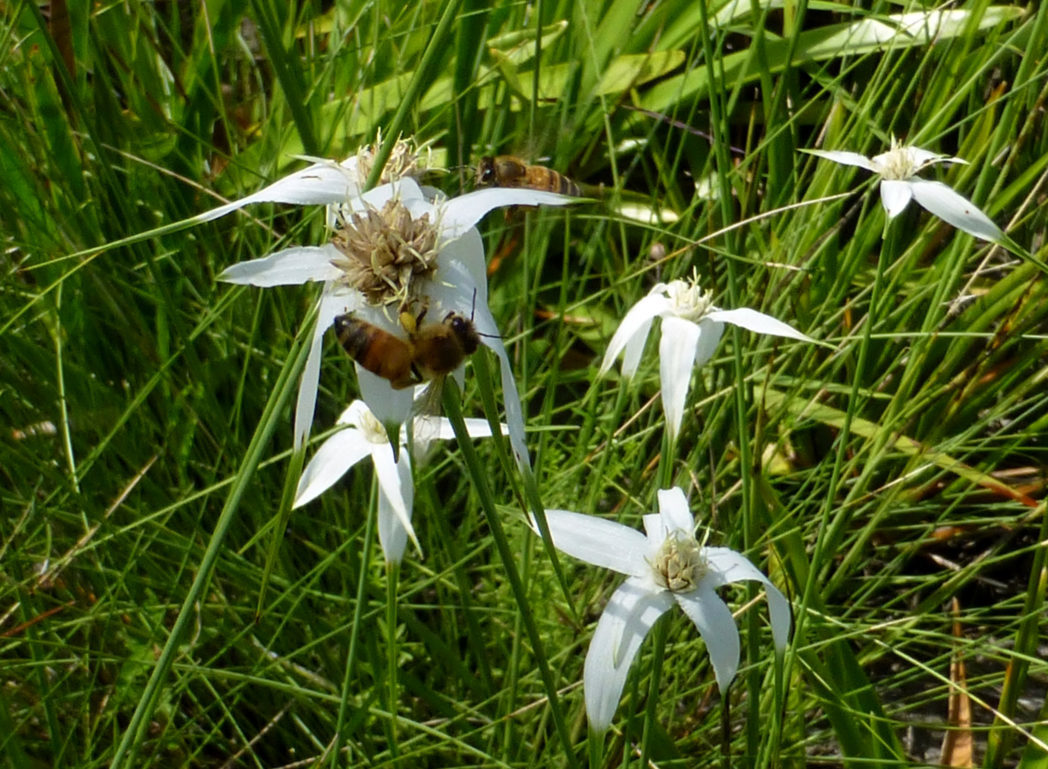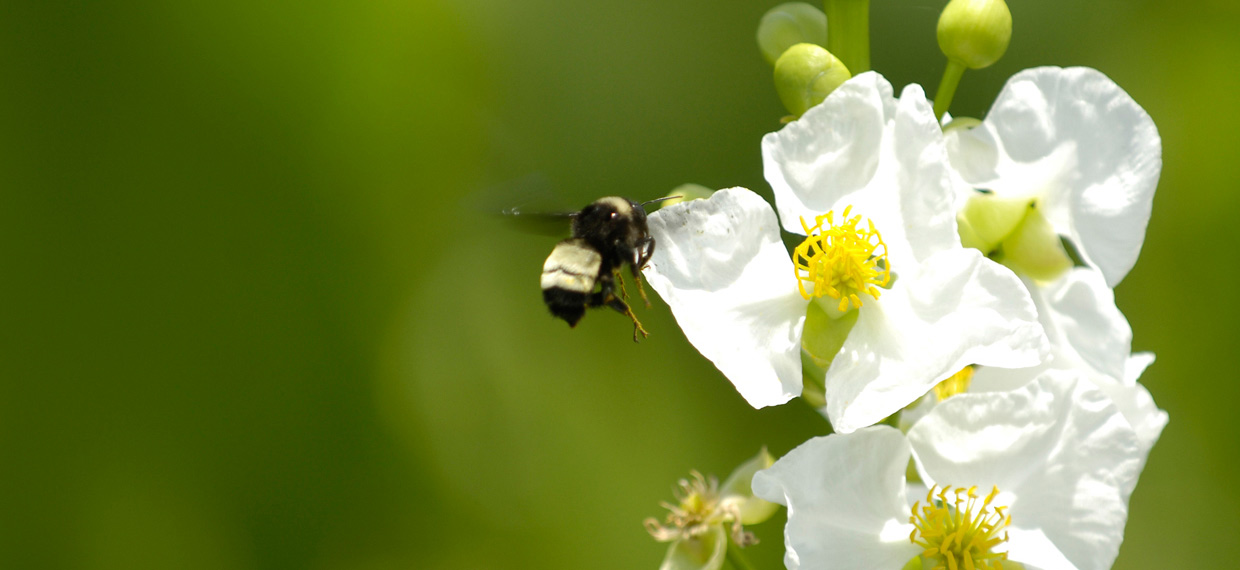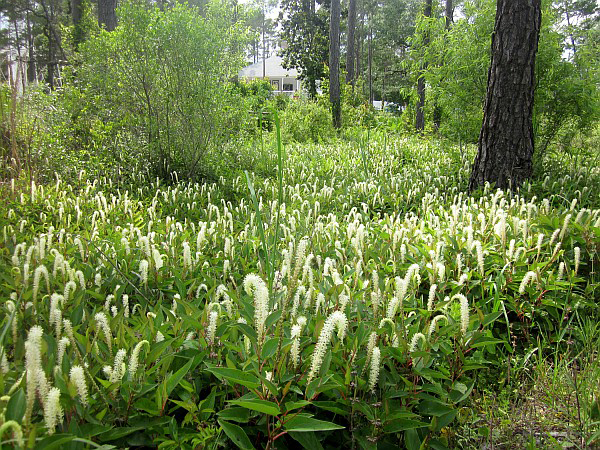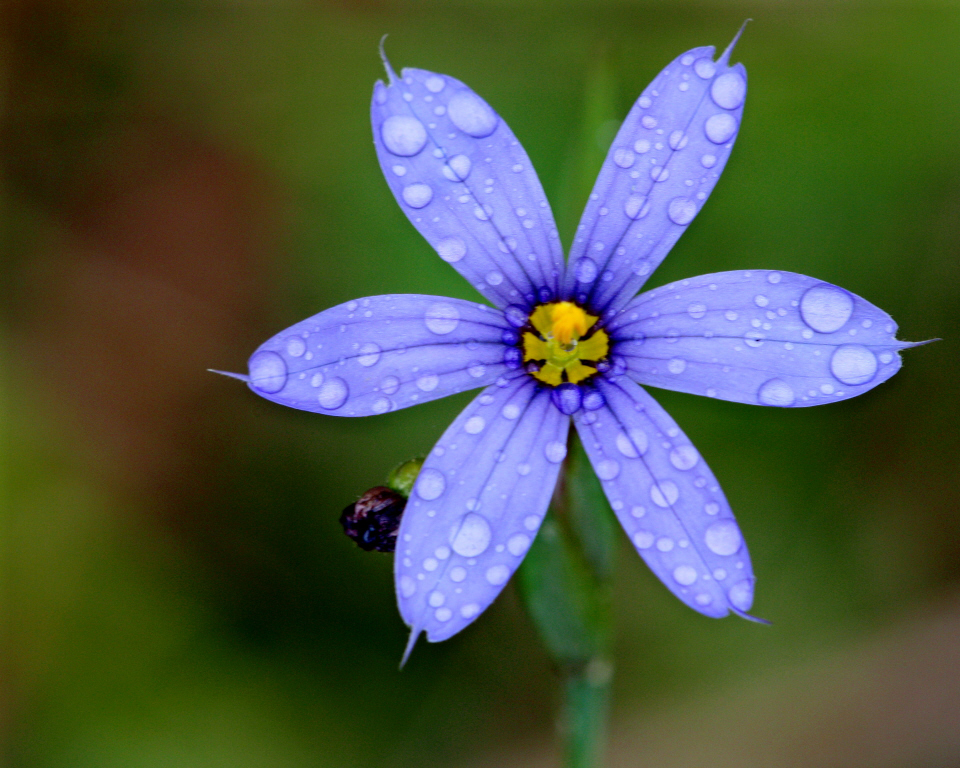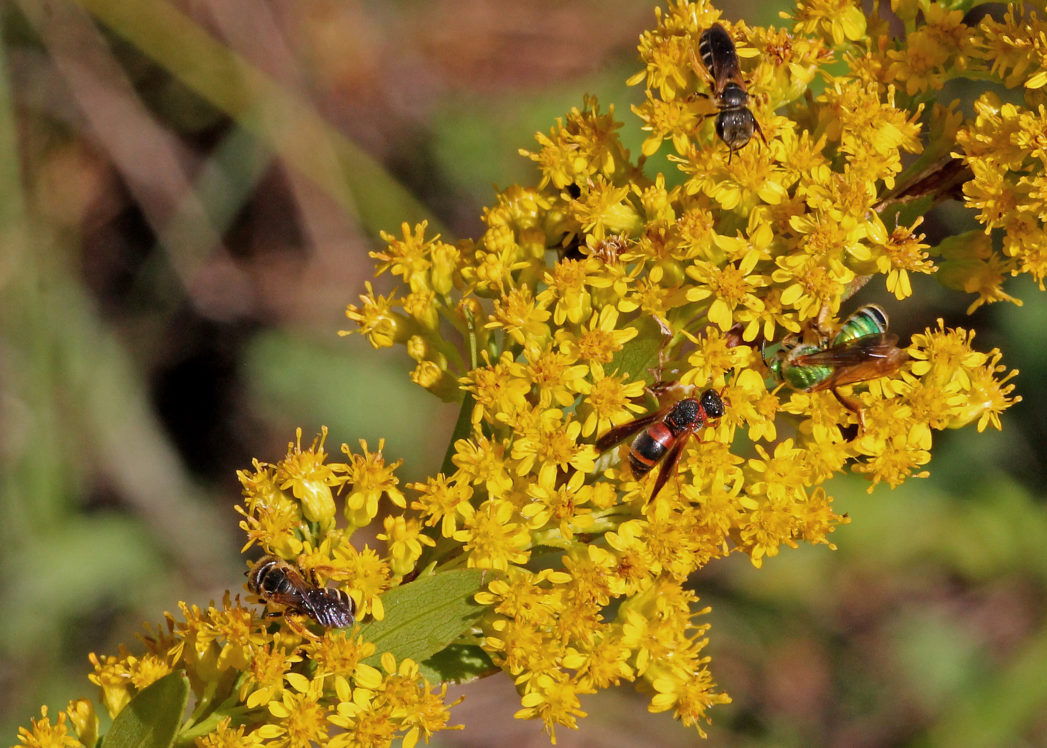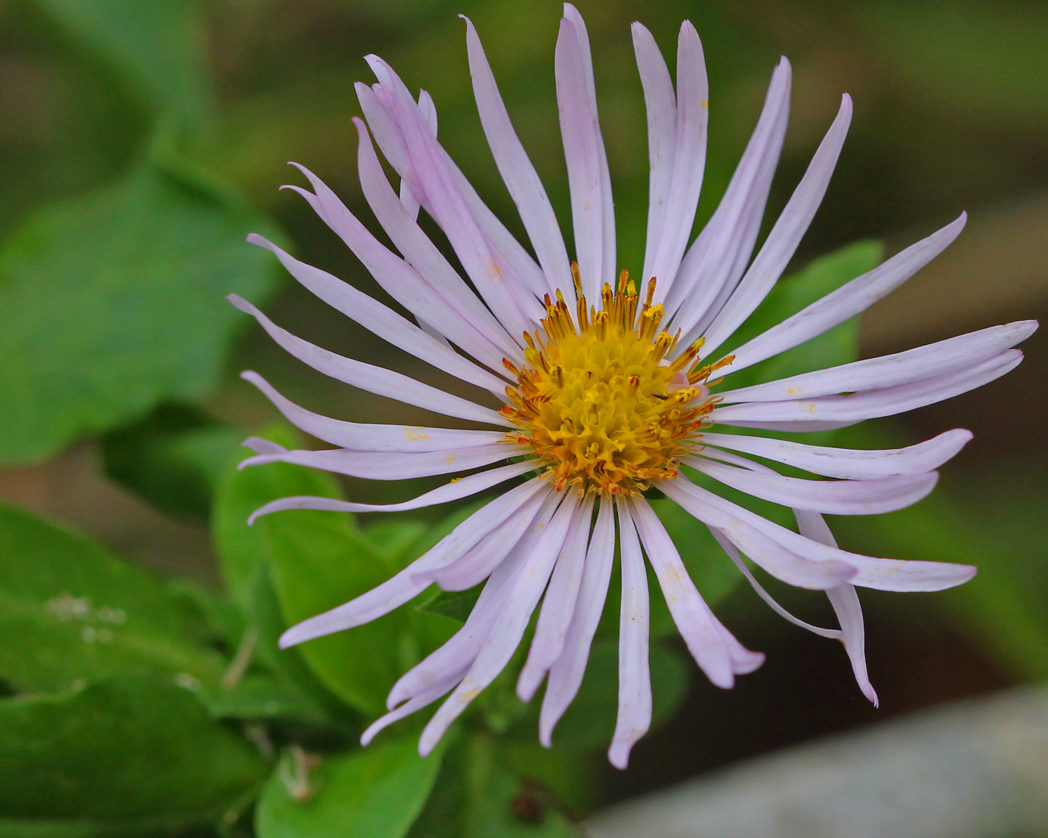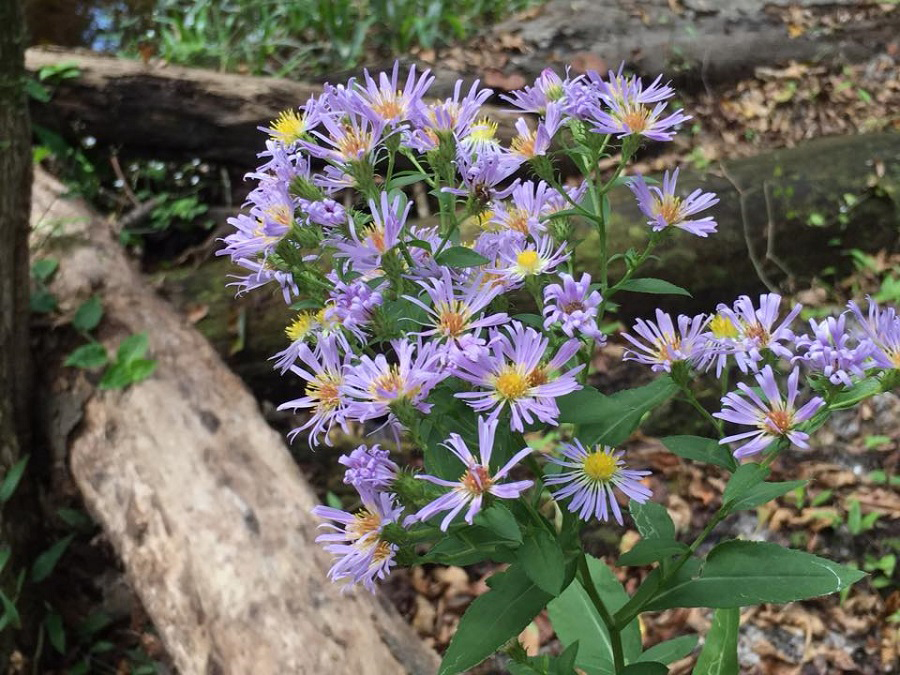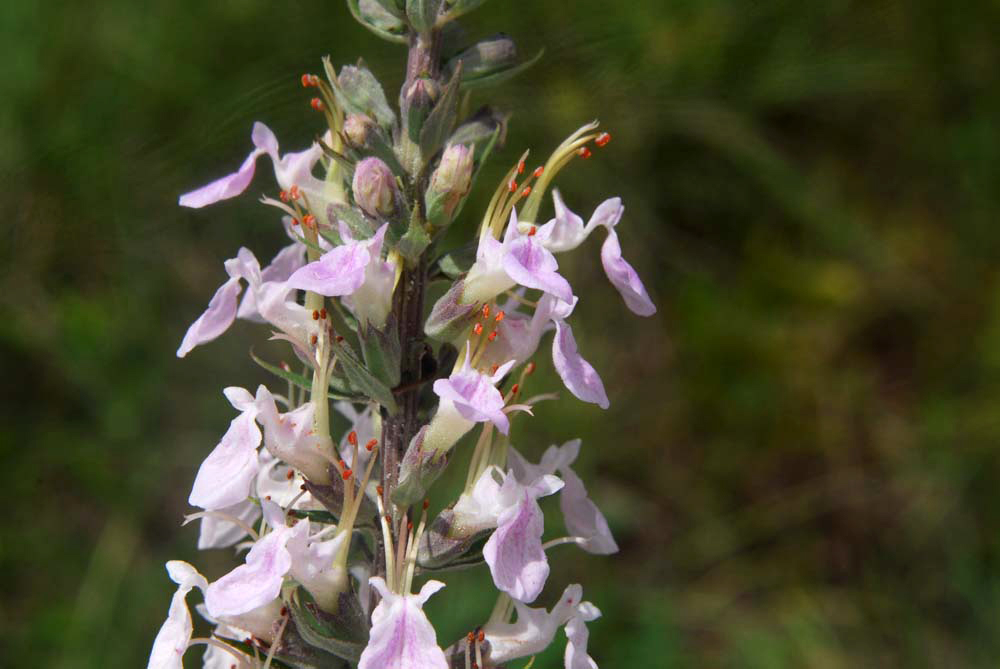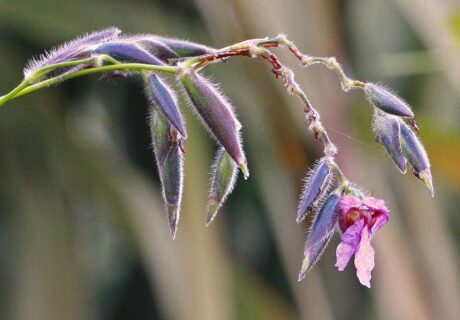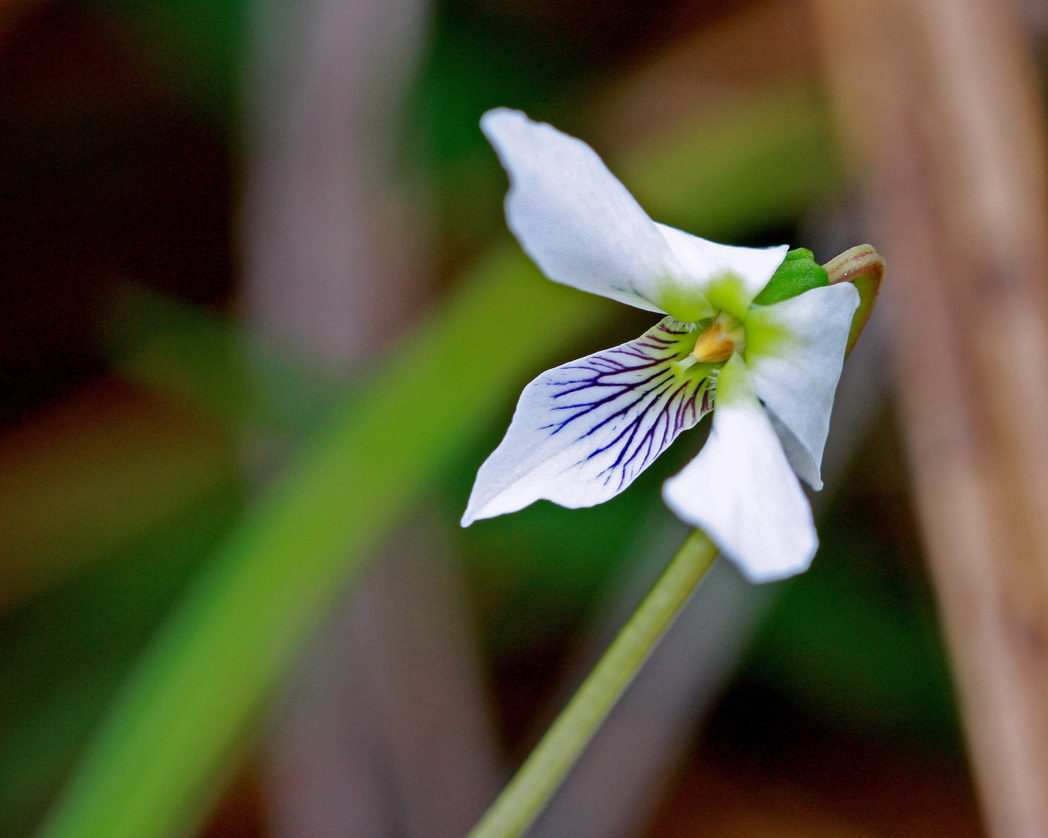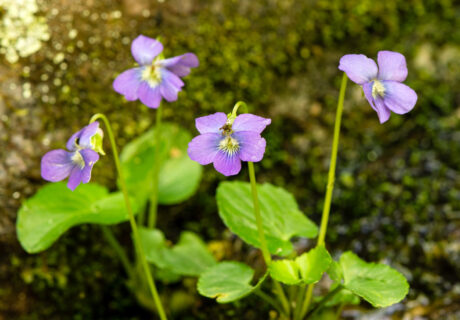Aquatic Wildflowers for Pollinators
Florida is a great place to garden near or in water with native wildflowers and plants. You’ll find a variety of areas where water is a permanent or temporary feature of the landscape including:
- Natural or man-made ponds or lakes.
- Graded stormwater retention ponds that collect and gradually drain excess rain runoff.
- Swales or ditches beside roadways that prevent excess water from reaching the road.
- Excavated rain gardens, which catch and utilize rain runoff from roofs and driveways.
All of these have the potential to become pollinator gardens as well as important habitat for a variety of insects and birds. Using a diverse slate of plants is the key to creating an area that supplies food, nesting areas and lifecycle support for a large variety of fauna.
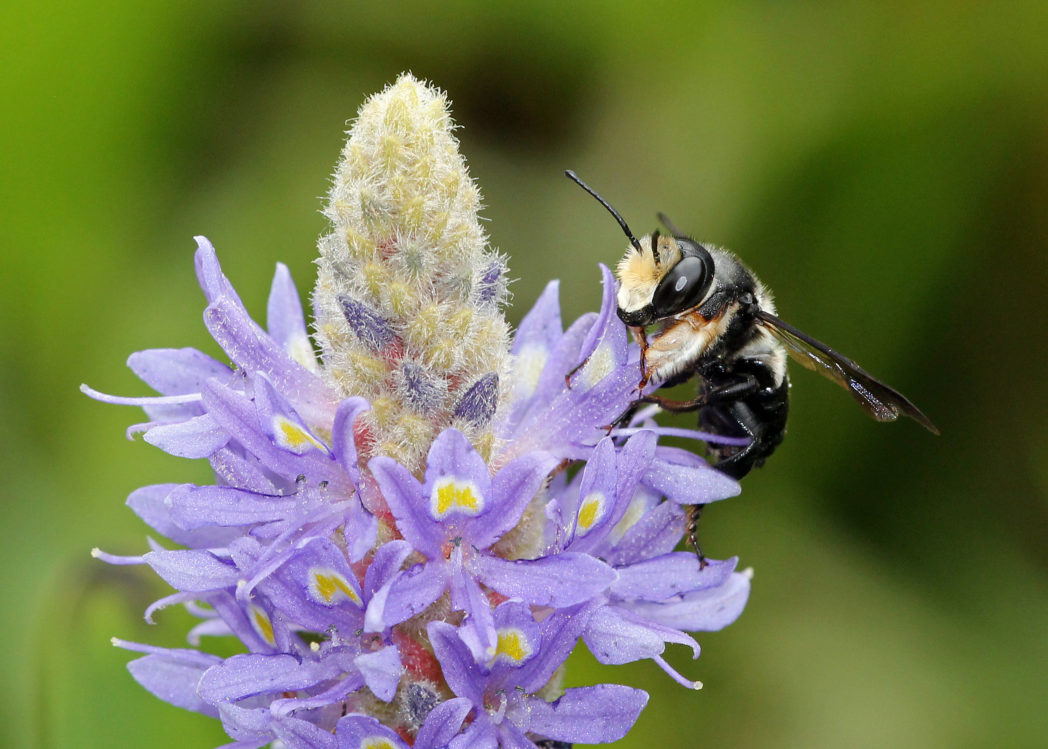
Know Your Aquatic Plant Zones
Ponds, lakes and rain gardens with shallow graded slopes and deeper central pools are ideal for a variety of plants. Different water depths support different plant species, depending on their root structure and capacity for saturation. It is important to match each species with its preferred soil conditions:
- Upland areas sit above the shoreline and may have moderately to very dry, well-drained soils since water drains downslope. Upland areas include hardwood hammock, pine flatwoods, scrub, dry prairie and pine rockland habitats.
- Shoreline plants occur from the upland area to the water’s edge. They are adapted to moist or saturated soils and can tolerate periodic inundation. This is the optimal zone for planting aquatic wildflowers.
- Emergent plants are found in shallow water (up to 2 feet deep). Their roots may be temporarily or permanently underwater, while plant stems and leaves grow above water and adapt to changing water levels. These plants provide fish habitat, reduce water nutrients and improve water clarity.
- Floating plants occur in water up to 4 feet deep. They may be rooted in the soil or free-floating. Proper spacing of rooted plants will ensure sunlight reaches the pond floor.
- Submerged plants occur in deep open water where sunlight can still penetrate to aid in plant growth.
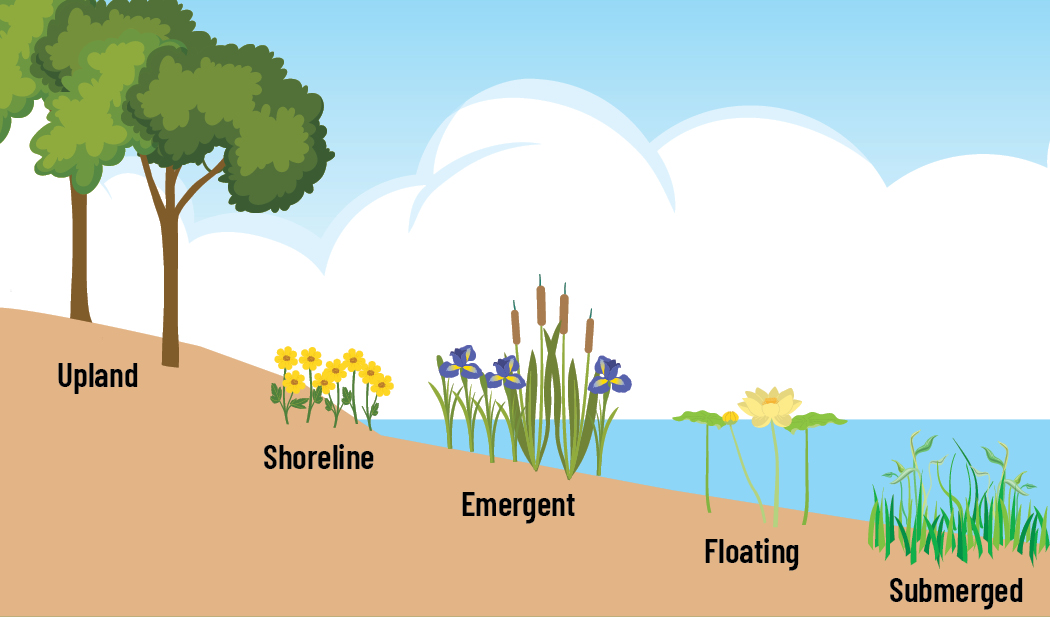
Planting and Maintenance Tips
Use a variety of wildflowers blooming in spring, summer and fall. Plant sparsely in clusters if you are using colonizing plants. Some species may spread quickly by root or rhizomes as they stabilize soil banks. Plants that are not in standing water may require watering for several weeks to become established.
Herbaceous perennials may die back in winter but will still provide habitat and nesting material. Plan on yearly maintenance to thin plant colonies by removing dead vegetation as needed. Refresh plants in spring by trimming old stems and be sure to remove pruned debris so water movement is not impaired. Excess debris that sinks to the pond floor can reduce oxygen levels and water clarity.
Retention ponds with steep sides may pose planting challenges due to drainage patterns. Determining the average water level is critical for successful plant establishment. Avoid excessive plantings that prevent the pond from achieving its purpose of controlling water runoff. Before planting, check county and local policies for planting in stormwater management ponds.
Great wildflowers for aquatic landscapes
Swamp milkweed
Swamp milkweed
Lemon bacopa
Herb-of-grace
Burr marigold
Bandanna-of-the-Everglades
Hairy chaffhead
Browne’s savory
Mistflower
Leavenworth’s tickseed
String lily
Interesting Eryngiums
Narrowleaf sunflower
Comfortroot
Scarlet hibiscus
Swamp rosemallow
Blue skyflower
Alligatorlily
Prairie iris
Virginia willow
Virginia saltmarsh mallow
Virginia saltmarsh mallow (Kosteletzkya pentacarpos) is a shrub-like wildflower with showy pink blooms. It occurs naturally in salt and freshwater marshes, swamps, sloughs, coastal swales and wet thickets throughout…

